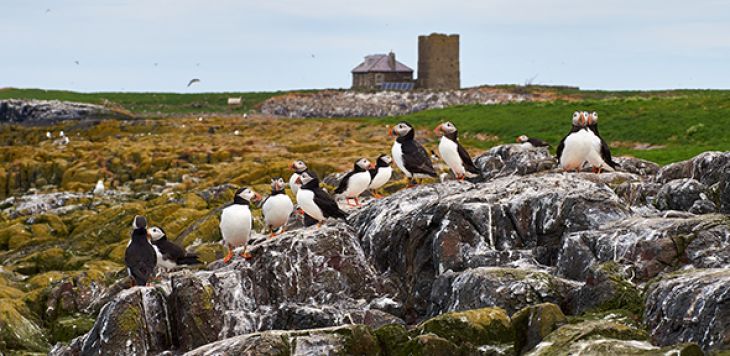Numerous European seabirds are at risk from climate change, according to new research led by ZSL (The Zoological Society of London) in collaboration with the University of Cambridge.
Researchers have published a first-of-its-kind conservation guide to protecting the 47 species that breed along the Atlantic coastline; offering hope for the future of these important marine birds, by assessing their species-specific needs and laying out the actions needed to preserve each one.
ZSL Institute of Zoology post-doctoral fellow, Henry Häkkinen, who led the production of the guidelines, said: “It’s unthinkable that the Atlantic puffin, one of Europe’s most treasured seabirds, could disappear from our shores by the end of the century – alongside other important marine bird species.
“Seabirds are one of the most threatened groups of birds in the world, with many already seeing rapid global declines due to the impacts of human activity and climate change, including changes to food availability, extreme weather conditions and the loss of breeding grounds.
“These birds face double the challenges as they breed on land but rely on the sea for survival; by living across these two worlds, they are essential to both ecosystems and give us a glimpse into the health of wildlife in otherwise hard-to-monitor areas of the ocean – meaning their loss would impact countless other species and their conservation.”
The two-year project to create the guidelines gathered evidence from more than 80 conservationists and policymakers across 15 European countries, alongside carefully collated information available from scientific papers across 10 different languages.
The pioneering European collaboration is the first to co-develop guidelines in this way, with the team hoping to scale up the project to map the risks to seabirds on a global scale.
“Seabirds are migratory, flying vast distances overseas and oceans, and so to truly enhance conservation efforts we need to understand how climate change is altering their environment across their entire range.
“It’s essential to develop strong conservation measures to protect these birds against the climate crisis, but this requires species-specific understanding of the threats that they face. For some birds, like puffins, we have a strong grasp of how climate change impacts them, but for many species, such as eider ducks and ivory gulls, this knowledge is severely lacking. These gaps need to be urgently addressed for us to help these birds to survive.”
Project lead, ZSL Senior Research Fellow Dr Nathalie Pettorelli added: “The challenges posed by rapid changes in climatic conditions require efficient coordination between science, policy and advocacy to ensure key questions are given research priority and effective conservation actions can be deployed in areas where they are most needed. These seabird conservation guidelines – and the process behind them – provide a vital and transferable framework that can help align efforts to prioritise and implement evidence-based climate change adaptation practices to safeguard a future for the species most at risk.
“The time to act is now if we are to buffer species from the impacts of climate change.”
The guidelines will be made available to all conservationists working with seabirds across Europe.
Article adapted from a press release by ZSL.







